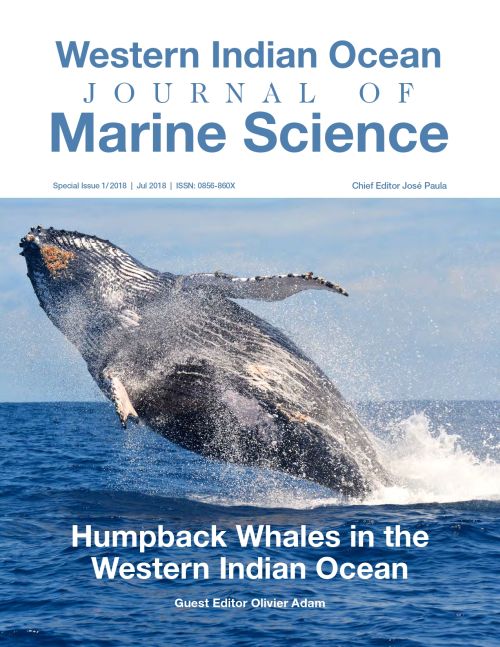Main Article Content
Using passive acoustic monitoring to assess humpback whale occurrence and breeding activity around La Réunion Island
Abstract
Humpback whales use the coastal waters of La Réunion Island seasonally from June to October. Their distribution is relatively well-known on the west coast, which provides suitable breeding habitat, however little is known about their use and movement along the south and east coast of the island. Three autonomous acoustic recorders were deployed during the breeding season of 2016 off the west, south and east coasts to investigate spatial and temporal variations in humpback whale occurrence around the island. The dataset consisted of 10 minute acoustic recordings every hour, continuously from mid-June to early September from these three locations. Song and social call events were discriminated and their total durations were calculated and expressed as a percentage of the total recording duration per day. Off the west and south coast, social calls were distributed fairly homogenously over the season, while songs occurred over a shorter time period, with two significant peaks observed in mid-July and early-August. Off the east coast very few vocalizations were detected. These results demonstrated that humpback whales preferentially use the west coast of the island for breeding. In this area, daily variations in singing activity were observed. Singers appeared to be more active at night and during the morning, when less boat traffic was detected.






